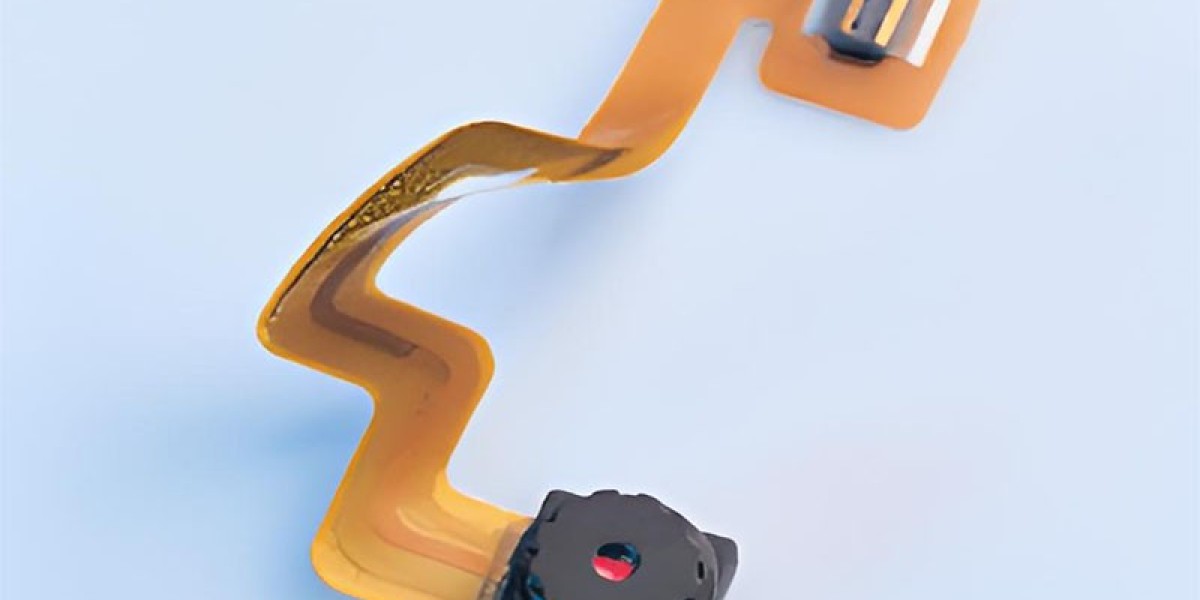Introduction
Multilayer Flex PCBs constitute an advanced form of flexible circuits that merge the benefits of flexibility with the enhanced intricacy and functionality afforded by multiple layers. These boards are fabricated using flexible dielectric materials, usually polyimide or polyester films, tailored to fulfill the requirements for high-density, compact, and dependable electronic components across diverse sectors. This article explores the details of multilayer FPCBs, encompassing their design, benefits, constraints, and utilization.
What is a Multilayer PCB?
A multilayer PCB signifies a printed circuit board incorporating two conductive material layers, each separated by insulating layers. These layers are bonded together to produce a streamlined and effective circuit board configuration. Multilayer PCBs are employed to accommodate increasingly intricate and densely packed circuit designs, which are indispensable for contemporary electronic devices.
Maximum Layers in Flex PCB
Flexible PCBs are subjected to stricter layer limitations relative to rigid PCBs due to their more complex fabrication process. Generally, flexible PCBs span from 1 to 8 layers. As the number of layers rises, the flexibility of these boards diminishes, and the addition of more layers can markedly increase costs and manufacturing challenges.
What constitutes a Flexible Circuit Board?
Flexible Printed Circuit Boards (FPCBs), often termed "flex boards," are circuits constructed from flexible dielectric substrates like polyimide or polyester films. Contrary to rigid PCBs, FPCBs possess the capability to bend, twist, and fold, rendering them suitable for applications necessitating compact and adaptable electronic components.Their ability to reduce the size of electronic devices and accommodate the trend towards high-density, miniaturized, and highly reliable electronic products has led to their widespread use in aerospace, military, telecommunications, portable computers, peripherals, PDAs, digital cameras, and more,FPCBs also offer excellent heat dissipation, solderability, ease of assembly, and relatively lower overall costs.
What is a Multilayer Flexible Circuit Board?
Multilayer Flexible PCBs are constructed by stacking multiple single-sided or double-sided FPCBs together. Through-hole plating and metallization processes create conductive pathways between layers, facilitating complex circuit designs without the need for intricate soldering processes.
While multilayer FPCBs provide superior reliability, thermal conductivity, and ease of assembly compared to single or double-layer FPCBs, they sacrifice some of the exceptional flexibility found in simpler designs. To address this, flexible multilayer FPCBs have been developed, which maintain a high degree of flexibility despite the increased number of layers. These boards are typically constructed by bonding multiple single-sided or double-sided flexible PCBs together, with the central parts left unbonded to preserve flexibility. Thin, suitable coatings, such as polyimide, replace thicker laminated covers to enhance pliability.
Advantages of Multilayer FPCBs
1. Enhanced Transmission Performance: Multilayer FPCBs offer superior signal transmission performance by enabling more signals to be routed within a compact area. This results in improved overall circuit performance within the same footprint.
2. Increased Circuit Density: The ability to stack multiple layers allows for higher circuit density. This construction significantly boosts circuit complexity and functionality while minimizing board size.
3. Improved Reliability: The uniform distribution of circuit traces across layers enhances the balance and stability of the board, reducing stress and improving the overall reliability and stability of the circuit.
4. Optimized Space Utilization: The compact and dense structure of multilayer FPCBs maximizes space utilization by stacking different circuit elements together, thereby reducing the overall size of the electronic device.
Disadvantages of Multilayer FPCBs
1. Higher Manufacturing Costs: The complexity of producing multilayer FPCBs, including precise printing and assembly techniques, leads to higher production costs.
2. Complex Termination: The process of terminating multilayer FPCBs is more intricate, involving folding and layer-to-layer connections, which increases the difficulty of manufacturing.
Applications of Multilayer FPCBs
Multilayer FPCBs are employed in a wide range of applications due to their ability to handle complex circuits and compact designs. Typical applications include:
1. Automotive Electronics: Used extensively in automotive systems such as climate control, navigation, and in-car audio systems.
2. Telecommunications Devices: Integral to devices like smartphones and tablets, where high-density, reliable circuits are required.
3. Industrial Control: Applied in high-performance industrial control systems, including manufacturing automation and robotics.
4. Medical Equipment: Utilized in medical devices such as diagnostic instruments and life-monitoring equipment due to their reliability and compact design.
Conclusion
Multilayer Flexible PCBs represent a sophisticated evolution in flexible circuit technology, with Gekun leading the way in this advancement. Our multilayer FPCBs provide a perfect balance between flexibility and high-density circuit capabilities. Their advanced design supports complex applications across various industries, offering enhanced performance, reliability, and space efficiency. As technology advances, the role of multilayer FPCBs continues to expand, and Gekun is at the forefront of this evolution, making them a critical component in the development of cutting-edge electronic devices.








